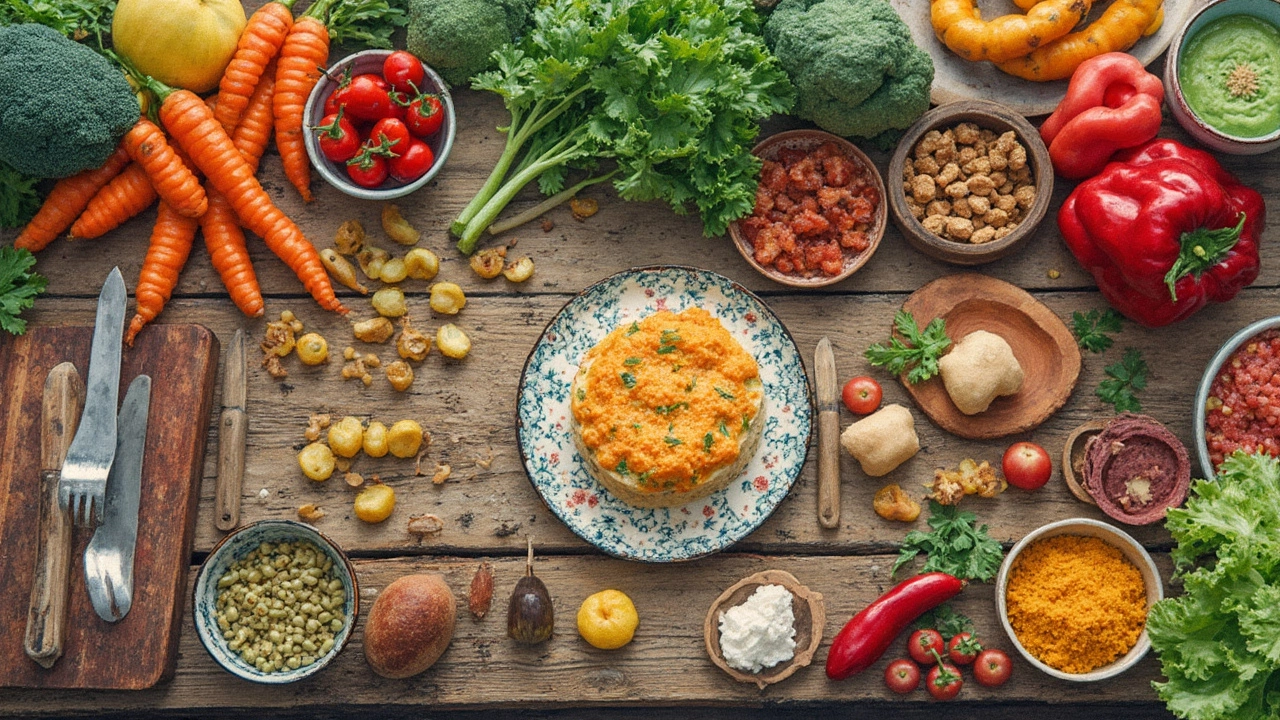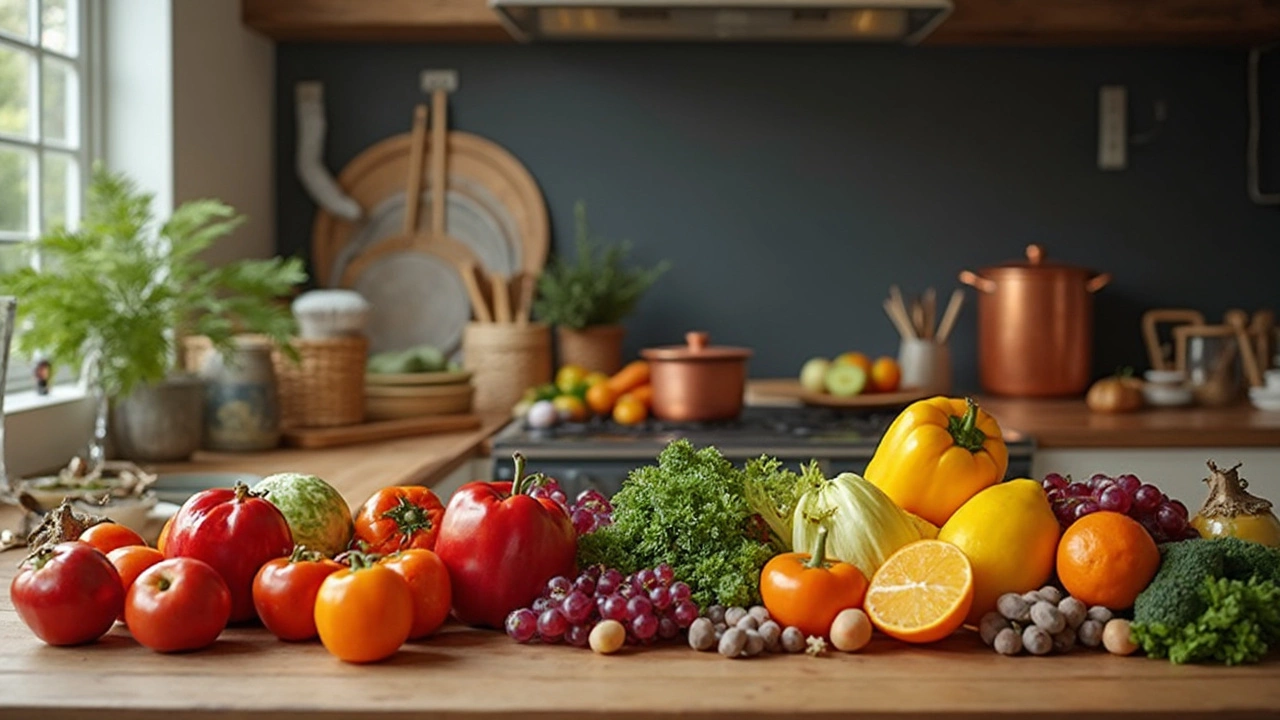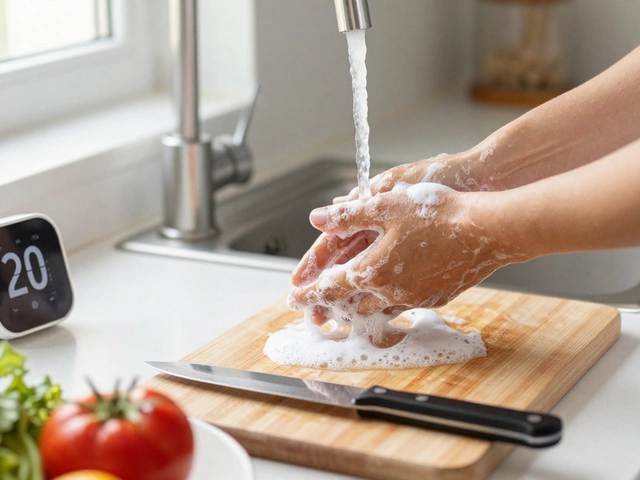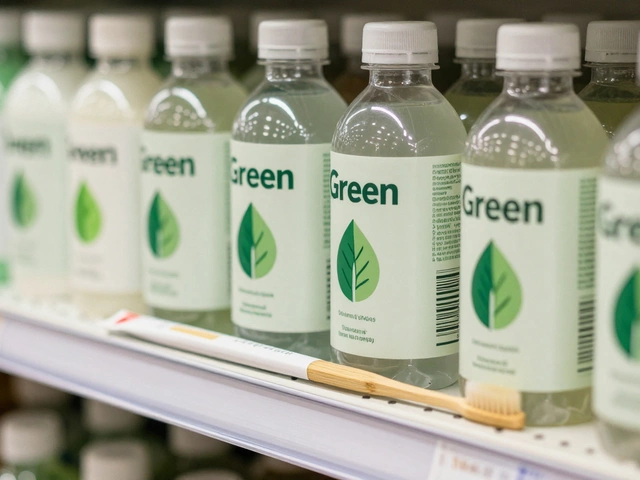Meal prepping: it sounds like the dream solution to busy weekdays. But here's the catch — not every food loves hanging out in the fridge for days on end. Some foods can turn your promising meal plan into a lunchtime let-down. So, what should you dodge when you're prepping for the week?
First off, a biggie: avoid perishable proteins like fish. While fish is awesome fresh, it's quick to spoil, making it less ideal for meal prep. Unless you plan to freeze it and reheat later, maybe stick to chicken or tofu for your weekly lineup.
- Perishable Proteins
- Veggies That Go Soggy
- Dairy Disasters
- Sauces That Separate
- Grains That Don't Reheat Well
Perishable Proteins
When you're thinking of getting a week's worth of meals ready, the choice of proteins can make or break your plan. Some proteins just aren’t cut out to be reheated on day four or five. Let's talk about why these perishable proteins might not be your best bet.
Why Avoid Fish?
Sure, fish is a great source of omega-3s and healthy fats, but when it comes to meal prep, it tends to spoil faster than you'd think. The high oil content that makes it so tasty can also lead to rapid rancidity if it's left in the fridge too long. Unless you're freezing your meals and reheating them properly, it's safer to leave fish as a day-of choice.
Better Alternatives
So, what should you go for instead? Think chicken or lean cuts of beef. These proteins not only stay fresh for longer, but they also retain their flavor and texture better over several days. Chicken breast and ground beef are especially good because they can be easily seasoned and thrown into various dishes, giving you versatility.
- Chicken: Grill or bake it, then add it to salads, wraps, or stir-fries.
- Tofu: A plant-based option that marinates well and keeps its texture.
- Beans: Packed with protein and fiber, they’re great for bulk meals like chili or stews.
Remember, the key to safe and tasty meal prep with proteins is all about proper storage. Use airtight containers and store meals at the right fridge temperature, generally below 40°F (4°C), to maximize freshness.
Quick Stats
| Protein | Fridge Shelf Life | Freezer Shelf Life |
|---|---|---|
| Chicken | 3-4 days | 9 months |
| Fish | 1-2 days | 6 months |
| Tofu | 3-5 days | 5 months |
Avoid the hassle (and the smell) of dealing with spoiled proteins, and stick to those with a longer fridge-life for a more successful meal prep experience.
Veggies That Go Soggy
Alright, let's talk about those veggies that seem to have a personal vendetta against meal prep. Ever opened your container of meal prep magic to find a sad, wilted pile of greens? Yeah, that's what we're here to prevent.
Some vegetables are just plain tricky when it comes to staying fresh for the week. One prime example? Leafy greens. Sure, they're nutritious — but spinach, kale, and arugula have a knack for getting soggy and lifeless. Using them raw in meal prep might not be the best idea unless you plan to add them right before you dig in.
Why They Go Soggy
Here's the deal: leafy greens have a high water content, which means they release moisture over time — perfect for making them wilt. Plus, if you mix them with anything with a sauce or dressing ahead of time, you can pretty much guarantee sogginess.
How to Prevent It
- Keep greens separate: Store your greens in a separate container or bag and combine them fresh when you’re ready to eat. This way, they'll stay crisp and your meal prep will feel fresh.
- Use sturdy veggies: Opt for heartier options like carrots, broccoli, and bell peppers. They’re less likely to sog out on you, keeping your meal prep game strong.
- Try roasted instead: Roasting vegetables can give them a longer fridge life. Think roasted sweet potatoes or brussels sprouts, which hold up much better than their raw counterparts.
One interesting tidbit: according to a study conducted by the Fresh Produce Association in 2023, people waste an average of 20% of their meal-prepped veggies due to spoilage. By keeping these tips in mind, you can cut down on food waste and keep your meal prep plans tasty all week long. Winning!

Dairy Disasters
When it comes to meal prep, dairy can be a sneaky saboteur if you're not careful. Yogurt, cream sauces, and cheeses may lose their charm after spending a few days in the fridge. Here's why you should be cautious with them in your meal prepping adventure.
Why Dairy is Tricky
Dairy products, especially those with high moisture content, are prone to spoilage and separation. For example, creamy sauces might split, leaving you with a watery mess instead of the rich dish you planned. Similarly, some cheeses can become soggy or lose their texture.
Trouble with Reheating
Reheating dairy-based dishes can also be problematic. High heat or uneven heating might cause dishes to split or curdle. Mac and cheese that turns grainy instead of smooth? Not what you signed up for! To avoid this, consider adding dairy elements right before serving rather than including them in the base prep.
Tips for Including Dairy Smartly
- Store dressings and creamy sauces separately. Add them to your dishes just before eating to keep things fresh and palatable.
- Consider using aged cheeses, like parmesan, which hold up better than softer cheeses over time.
- If your recipe allows, substitute dairy with non-dairy alternatives that are less prone to separation, like coconut milk.
With these tips, you'll dodge those dairy disasters and keep your meal prep game strong. Remember, though, not all dishes will survive extended fridge life, so it's okay to experiment and find what works for you!
Sauces That Separate
Picture this: you've prepped an awesome meal with the perfect sauce. But come lunchtime on Wednesday, and it's a gloopy mess. That's the reality of certain sauces that just don't hold up in the fridge. Tracking down the culprits can save your meal prep game.
The biggest offenders? Oil-based salad dressings and homemade sauces that lack stabilizers. They might look nice and creamy at first, but give them a couple of days and they start breaking apart. It's like they missed the memo on teamwork!
Why Do They Separate?
In many meal prep sauces, water and oil are duking it out in some invisible battle. Without a friendly emulsifier (think mustard or egg yolks), separation is pretty much guaranteed. So if you're mixing your own dressing, make sure to throw something in there to keep everyone getting along a bit longer.
Save Your Weekwise Meal Magic
If you're not planning to eat it within a day, here's a tip: keep the sauce in a separate container and add them just before eating. This trick keeps everything fresh and crispy. And hey, it doesn't hurt to shake things up from time to time — literally, just a quick shake before adding can work wonders.
Looking for meal prep tips? Opt for vinegar-based sauces or ones with a touch of cornstarch to maintain that silky texture. It doesn't just save you the hassle, but might actually enhance the flavors as the ingredients mingle over time.
| Stabilizer | Purpose |
|---|---|
| Mustard | Emulsifies dressings |
| Yogurt | Adds creaminess |
| Cornstarch | Thickens and stabilizes |
Navigating the sauce game might feel tricky at first, but remember: just a few tweaks can make the whole difference between a soggy mess and a delicious meal.

Grains That Don't Reheat Well
Ever tried reheating a meal only to find the rice or quinoa has turned into a mushy mess? Not all grains are made for the reheat game. Getting it wrong can be a total meal prep mood killer. So, which grains should you avoid when you're planning to stash meals for later?
Sticky Situations with Rice
Rice, especially white rice, seems innocent, but it can be temperamental. Reheated rice often becomes dry or, worse, clumpy. If you must include rice in your meal prep, try parboiled or brown rice — they have more structure and can better handle reheating. But be careful: rice needs to be cooled and stored properly to avoid bacteria risks.
Quinoa Quandaries
Quinoa has become a superfood hero, but it’s not the best reheating buddy. When quinoa cools, it can lose its delightful fluffiness. If you don't mind a bit of extra texture, go ahead, but for those who crave the original consistency, stick to small batches and eat soon after it's cooked.
Pasta Pitfalls
Now, while pasta isn’t a grain itself, it's a common carb player. Pasta can turn into a sticky, bloated version of its former self when reheated. To combat this, cook it al dente, so it retains some bite after reheating. Adding a little olive oil when storing can help keep noodles from becoming a unified blob in the fridge.
Preparation, cooking method, and storage are key. If you're aiming for the best results, explore grains like farro and barley. They tend to hold up better when it comes to storage and reheating, thanks to their hearty texture. Remember, your choice of grains can make or break your already stellar meal prep plan!










